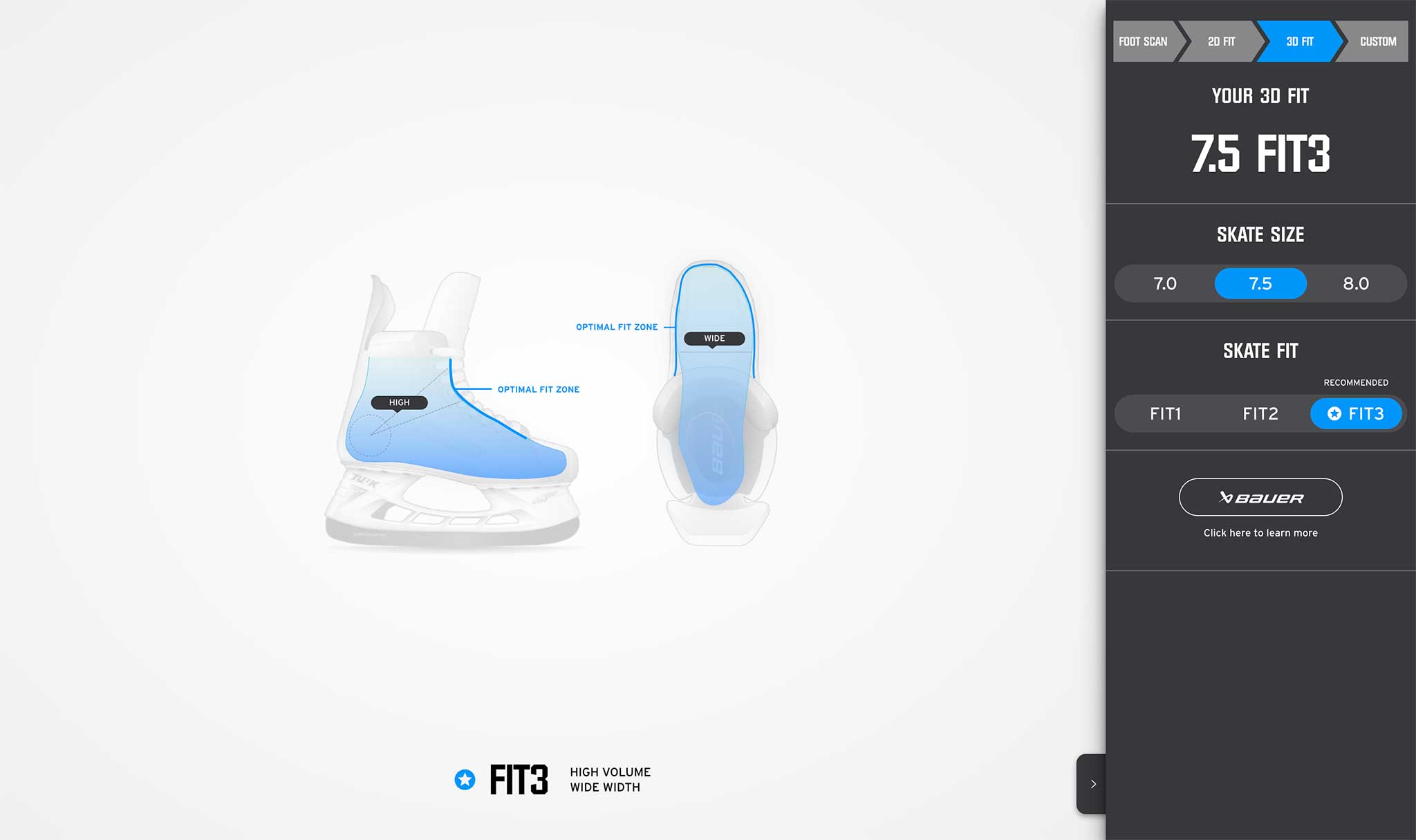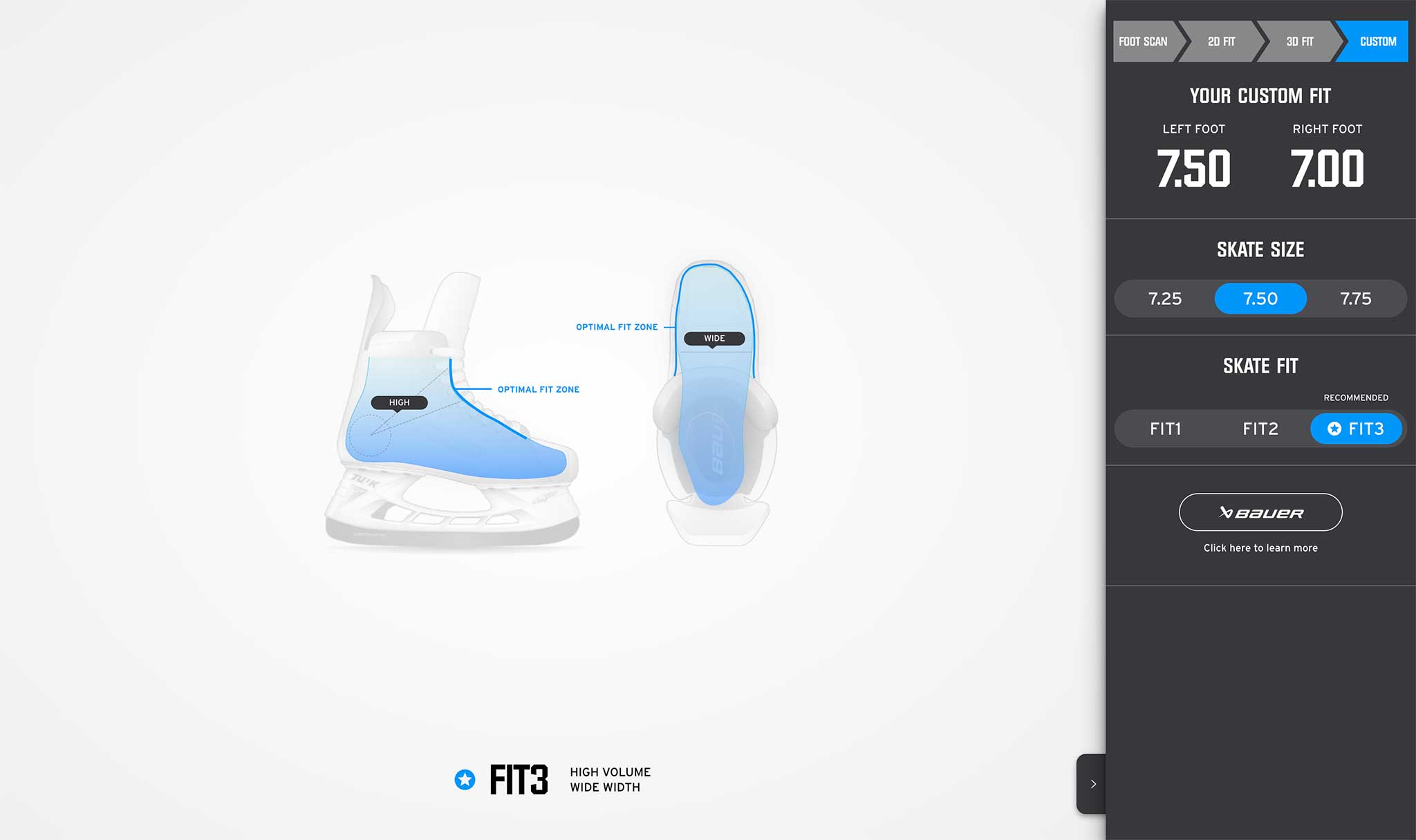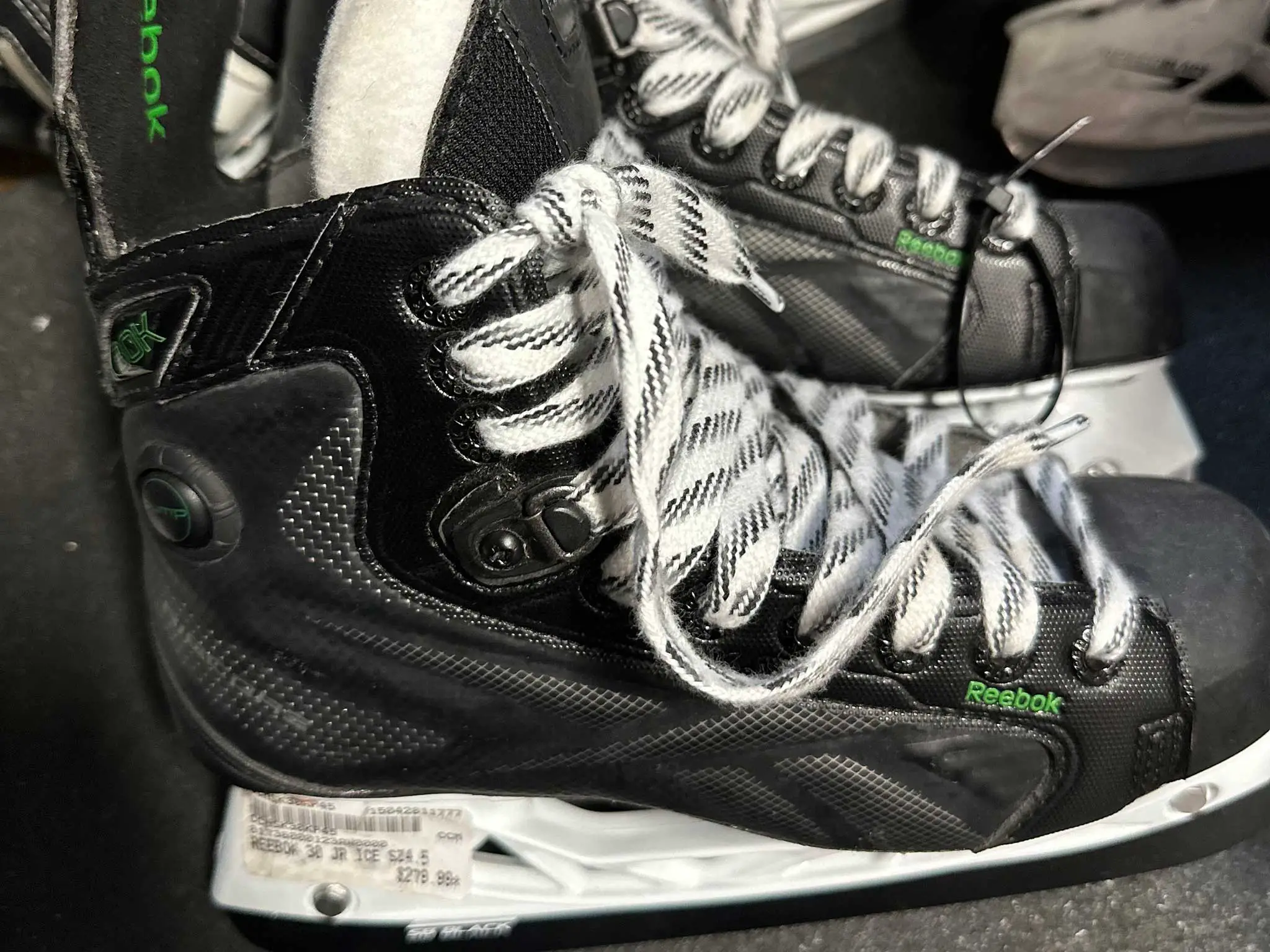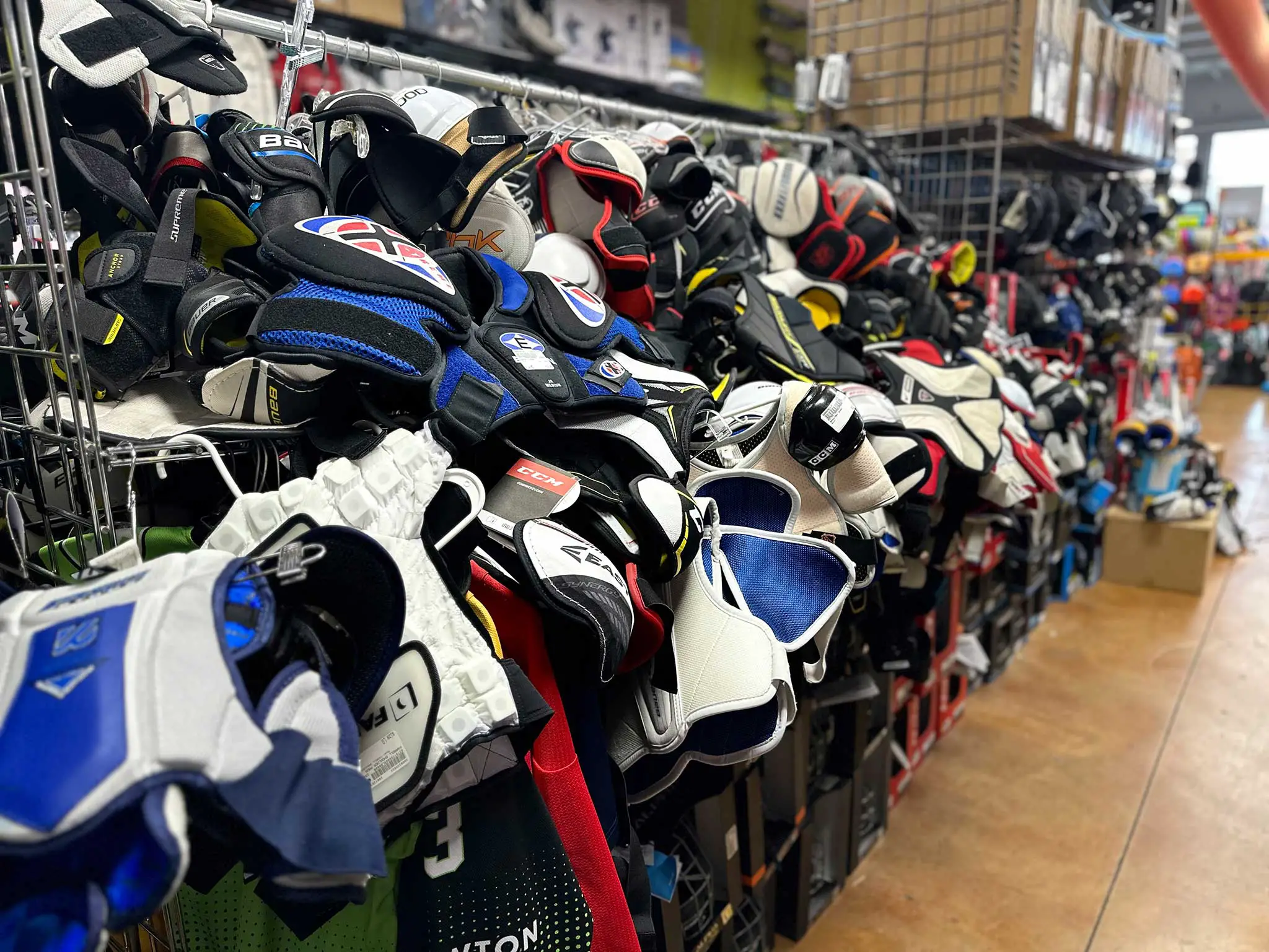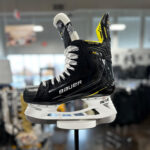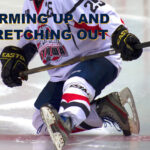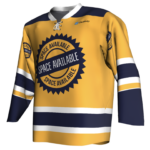Of all the equipment used for playing the game, ice skates are your most important investment. Because the game requires foot control on a blade’s edge, a decent quality skate that protects and supports your feet and ankles while maintaining comfort is key to enjoying the game. Whether used or new, skates that hurt make the game less enjoyable and a lot more work.
How much should you spend on ice skates?
Skates are very important, but just because you can spend a lot of money, doesn’t necessarily mean you need to. Everything in hockey comes down to your feet and legs. The fit of your skate translates directly to how well they provide a conduit between your foot and the ice.
New ice skates range in price from $100 to over $1000 depending on flexibility of the boot, materials and weight. You can get used skates for 10-25% of that price for a comparable skate.
For a new skater looking to take the ice to play hockey, I would recommend spending no more than $50-$100 for used skates. If you’re determined to try new skates, you should look for a skate in the $100-$150 price range. These lower end, yet new skates can help minimize your investment while you determine if you like the game.
Why you should spend $100 on used skates when you can get a new skate for just a little more money? With used skates, you can get a higher end skate with a better boot. So what might be a $400-$500 skate new could be found in a used-skate store for $40 – $75. It depends on the skate, the quality, and the condition of the skate.
Factors To Consider When Buying Skates
- How much do you plan to skate? The average beginning skater skates once or twice as week at and won’t need to plunk down a lot of money here for a top of the line skate. At least not in the beginning.
- What is your skating level? Because you may just be getting started, worry less about the bells and whistles and get what gives you enough protection and comfort to get started.
- Your foot. Make sure you get skates that fit. Especially the width of your foot. Narrow skates on wide feet may feel good at first, but can quickly become uncomfortable. All skates will require break-in time, but getting something that is at least initially comfortable can make the break-in time easier.
The Bauer X-LS or X-LP series are a good introductory skate if you don’t want to spend a lot of money but want new skates. I’ve skated on Reebok, Graf and Bauer skates and have always found Bauer skates to provide a great product at an affordable price.
Lower price point, means not as high quality material. They tend to be stiffer and take time to break in compared with used skates and may need to be sharpened more often. Lower-end skates should not be baked unless they explicitly state they can because the material may not be designed to be exposed to the heat required for baking and could damage the boot.
Ice hockey skates are made up of three major components: the tongue, the boot, and the blade. These components dictate the quality and fit of the skate, as well as how they interact with the ice. They also are the key factors that go into making up the price. When you are looking for skates, particularly second-hand skates, you should factor in these components.
The Tongue
The tongue is what holds your foot to the sole when you stride and interacts directly with your laces to provide comfort and pressure on your foot. This keeps it from moving around in the boot thereby preventing blisters, while not cutting off the circulation to your ankle and toes.
A flexible tongue also provides less resistance to bending knees – one of the first things you will learn as a new player. The tongue acts as an insulator between your laces and how tightly you tie them and ultimately protecting your foot from lace bite.
The Boot

Boot size and fit is an important and often misunderstood component. Adult/Senior skates should be 1.5-2 sizes smaller than your normal walking shoes. My shoe size is 9.5 and I wear a size 7.5 skate. If you have a wider foot, be sure to wear E or EE width boots.
Focus on the comfort of your toes, heals and ankle. You should be able to move your toes a little but that’s it. Your ankle and foot should not slide around inside your boot. The heat and moisture of skating will help break in your skates – especially if you have had them baked.
Remember, “baking” your skates – or superheating them to help break in to your foot will null the warranty on anything you buy online and will eliminate your ability to return them.
There are skate fitting scanners will have that will scan, analyze and fit your foot into a variety of skates and boots and also provide you with a 3D scan of your foot. Scanning technologies such as Bauer 3D Skate Lab give you options for both Bauer and generic skates – so you are not locked in to buying Bauer skates. It will, however, recommend specific skates for you depending on the scan.
For example, I skate 1-2 times a week, have a size 7.5 skate in EE and wear Bauer Supreme M4’s with a Fit 3 boot. I was able to buy a new pair of skates for $450 – a very reasonable price for a new pair of fitted skates. You can see what the scans look like in the images above.
Bauer is not the only skate manufacturer to offer this technology. CCM has similar system for providing 3D foot scanning and skate evaluation called CCM 3D Fit Master but has the added benefit of offering insight into CCM’s custom skate program. Custom skates are absolutely not necessary for the beginning hockey player.
The Blade
Many skates will have interchangeable blades. This means you can replace the blade when it gets too worn, or if you want to try a different type of material for your skate blades.
Different blades consist of different materials. Some blades are harder in that you do not need to sharpen them as much and can absorb contact with the puck or boards easier than others. Some are designed for more glide. At the outset, you should focus on a blade with good glide to help develop solid skating fundamentals.
As a general rule, Beginning players should have their slates sharpened, or cut, to a 1/2 inch circumference to start. If you want more bite in your turns, then a 3/8th cut may be more to your liking. More glide? Then go to a 9/16th or 5/8ths. Experiment as you can to get what feels right for how you find yourself skating.
Buying Second Hand Skates
You can typically find second hand skates in sports re-seller stores. Size and selection will vary from store to store as their inventory is dependent on what is sold to them. There are also online gear swap web sites such as SidelineSwap.
Purchasing skates second hand may make the game more accessible financially but as with anything else that is used, your mileage will vary. The lower price point is particularly attractive if you can find adult skates in or close your size. Adult skate sizes 7.5 – 10.5 are very popular and tend sell very quickly at second hand stores. If you find them, definitely check them out to see if they may be a match to your feet. While the goal is to have a skate 1.5-2 sizes smaller than your shoe, you may need to be little more flexible with used skates given selection.
Browse and inspect the boot, tongue, lace eyelets, and blades to make sure everything is properly attached and the eyelets not ripped. All of these things will have a certain amount of wear and tear, but avoid buying skate with detached tongues or broken out eyelets. An often under looked area are skate insoles. It can cost $20-$50 for a quality skate insole if it needs replacing.
Finally, remember these skates were broken in on someone else’s foot. It will take time for them to feel natural to your foot. Also keep in mind that you can never bake used skates. That is a really good way to throw away the money you just spent.
Conclusion
Regardless of the skate you buy, there will be some initial discomfort as the skate is broken in to your foot. This applies to new and used skates. It will take some wear for that to happen. Heat and moisture are the two things that break in skates the quickest as they are on your feet and that comes with skating on them.
But selecting a skate that is comfortable when you are at on the bench still mitigate the break in process. So find yourself a comfortable pair of skates and lets play hockey!









